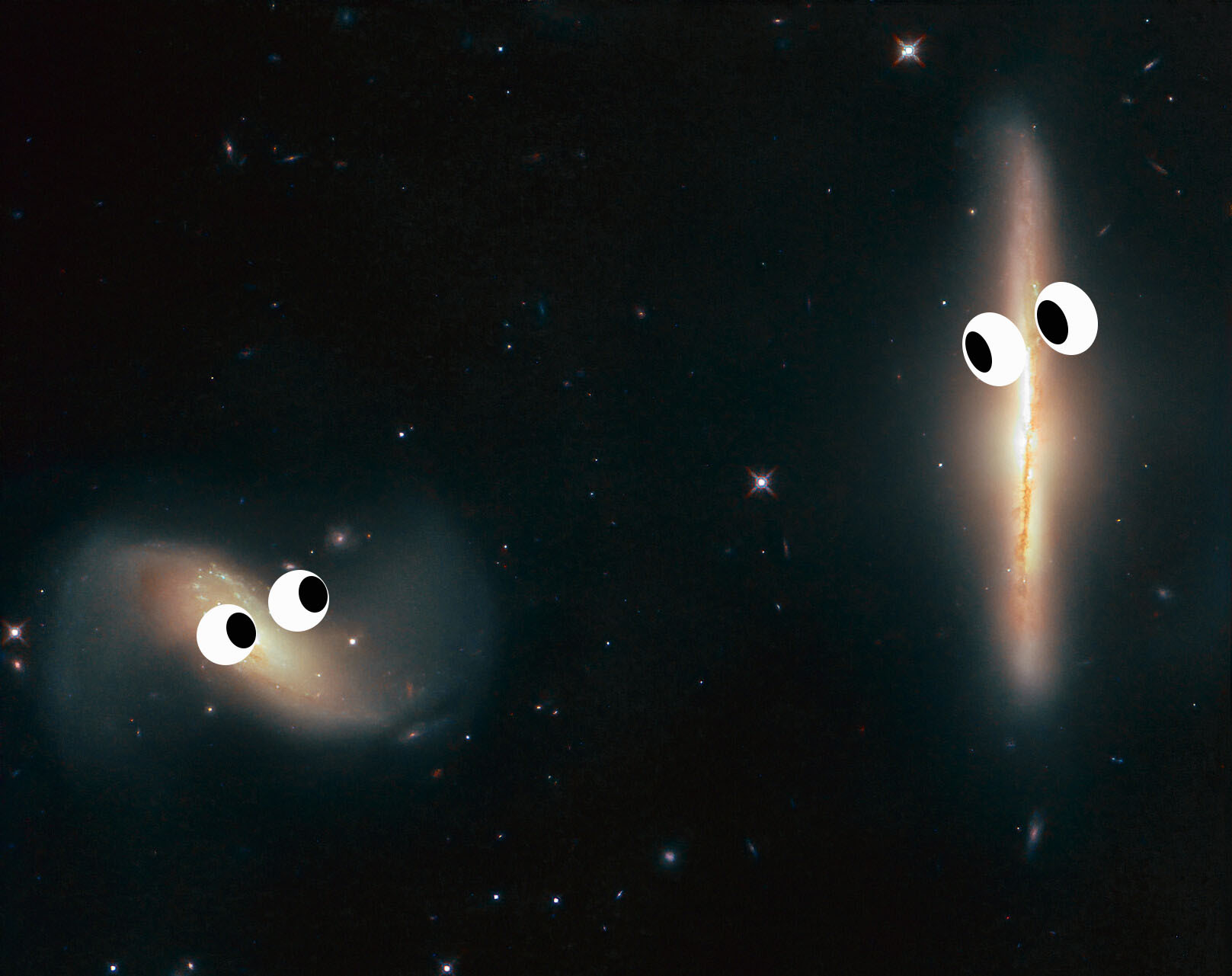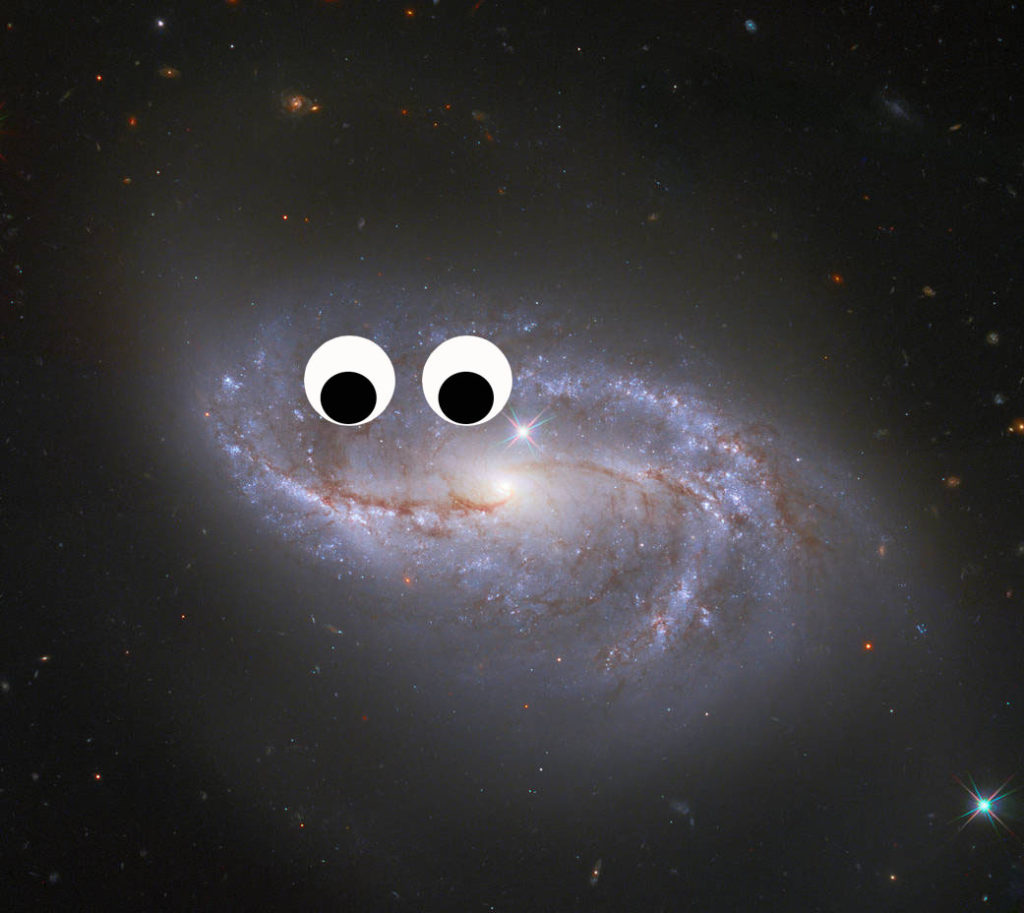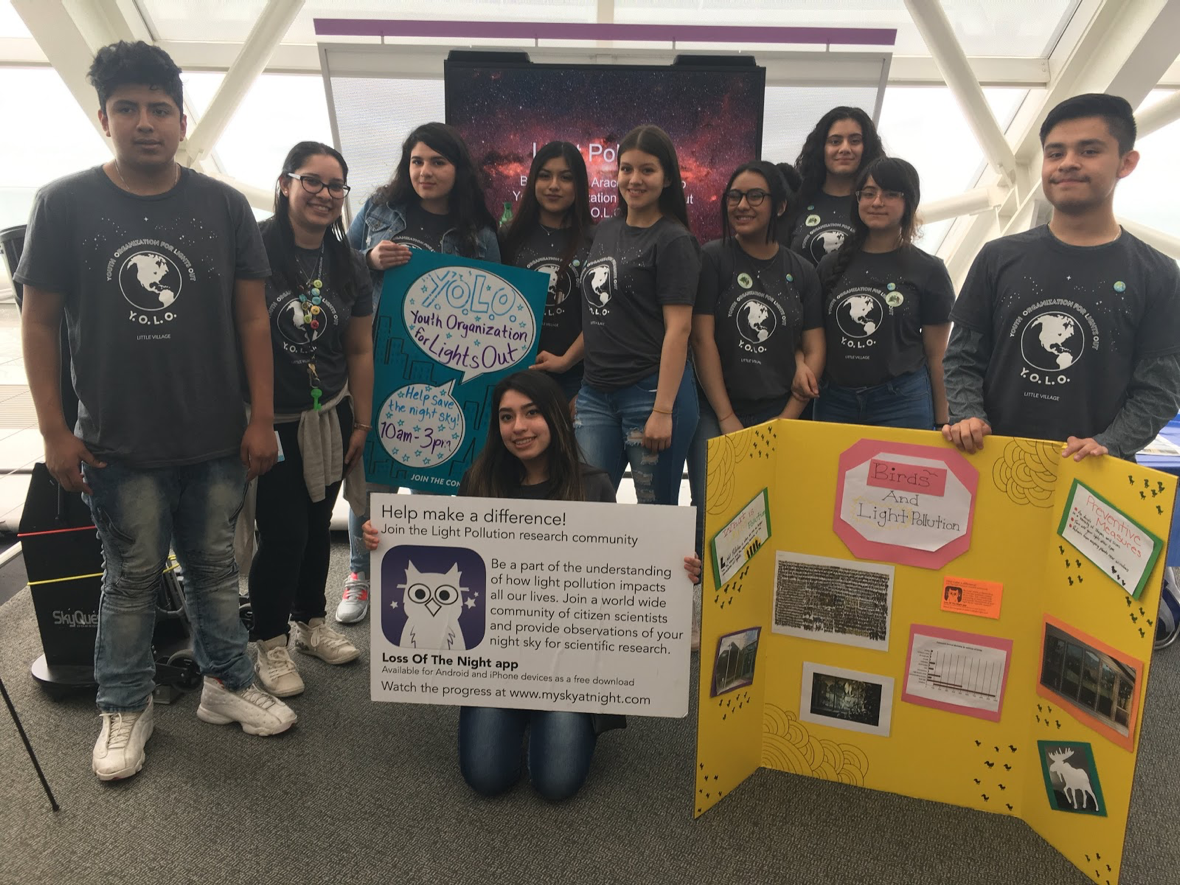Social Distancing For Galaxies

Header Image: The original image of galaxies NGC 6285 (left) and NGC 6286 (right) was taken by NASA Hubble. Image Edit: Adler Planetarium
We all know that social distancing is a good way to avoid catching (or spreading) a virus, but what if the stakes were even higher? What if standing too close to someone else could alter the whole trajectory of your life? What if it caused the shape of your body to change, or it made you and your unlucky neighbor stick together permanently?
Imagine you’re a galaxy.

You mostly keep to yourself, which is easy because your closest neighbor might be millions of light years away. But you’re also in constant motion, and so are all the other galaxies in your group. A group is what galaxies like you call their neighborhood. You and your galactic neighbors may be extremely far apart, but you are bound together by gravity, and if you don’t watch where you’re going, you might bump into each other.
Bumping into a galaxy when you are also a galaxy is not like bumping into a human being. You can’t just take a step back, say “Oh, excuse me, I didn’t see you there,” and get on with your day. You are too massive and moving too fast.
So what should you do? How close CAN you get to another galaxy before you have to worry about being warped
careening off in a new direction
slamming directly into your neighbor
or becoming them?
Well, you’ll definitely want to avoid risky behaviors like rushing directly toward another galaxy while it’s rushing toward you. And pay attention to your trajectory, because even if the coast looks pretty clear today, a few billion years from now, you might find out you and another galaxy in your group have been approaching the same spot—and then it will already be too late.
Assuming you’re not already on a collision course with one of them, how close you can get to your neighbors without having to deal with any of the severe consequences outlined above depends on your mass, their mass, and how fast you are moving relative to each other. If one of you is much denser than the other, density can be a factor, too.
If you’re about as massive as the Milky Way, and your neighbor is about as massive as the Milky Way’s neighbor Andromeda, you’ll want to stay at least 150,000 light-years apart to avoid any trouble. (In case any of your human friends want to know, that’s about 4,655,871,295,561,417,322,835 feet.)
In general, if you move very fast, you can get a little closer than you otherwise could (but still not too close!) to your galaxy friend without putting either of you in danger. And remember: low-density galaxies are at high risk of being torn apart by high-density ones, so differently-dense neighbors should give each other extra space.
Whether you’re a galaxy in a quiet corner of the universe or a human being during a pandemic, social distancing keeps you safe and makes you a good neighbor. So for your sake—and the sake of all the shining stars around you—don’t get too close.
—
Special thanks to Mark SubbaRao, the director of the Adler’s Space Visualization Lab, for creating the galaxy collisions (minus the googly eyes) for this post!







